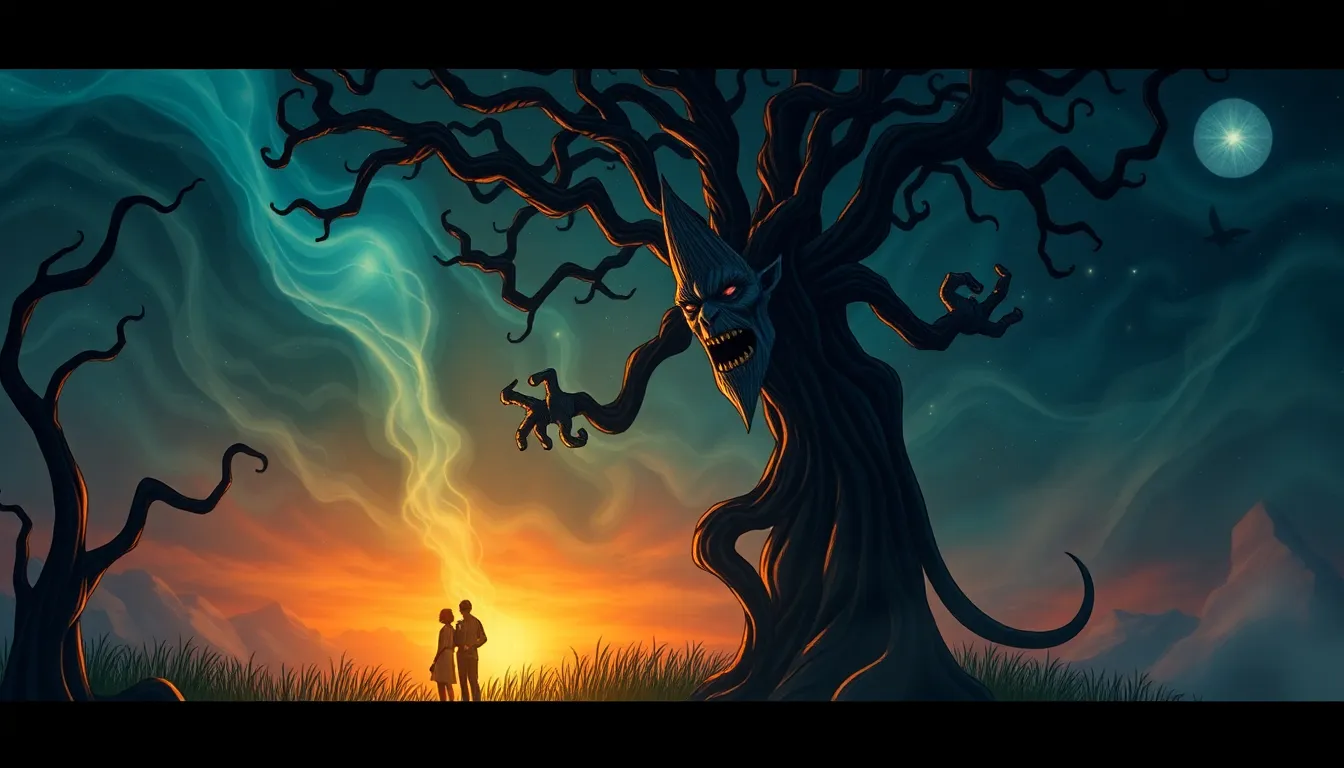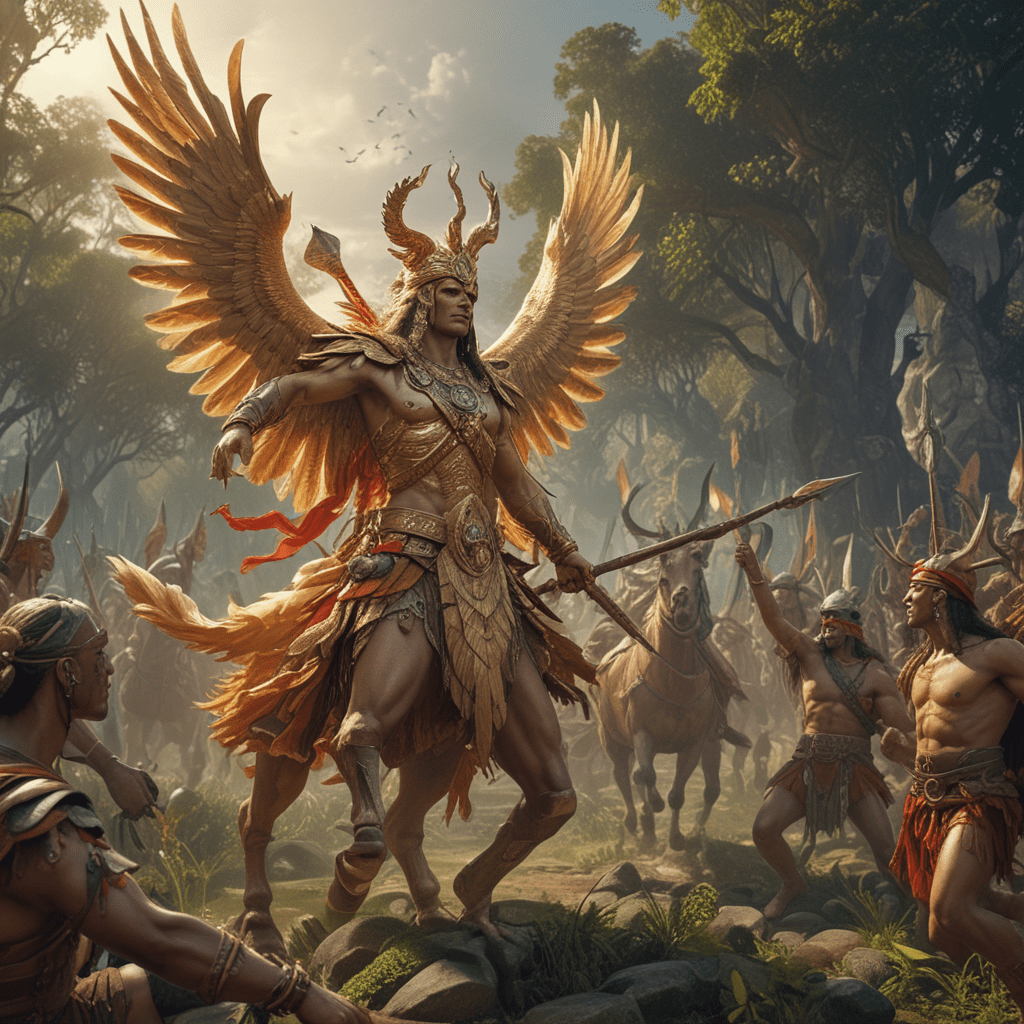The Most Hilarious Trickster Stories You’ve Never Heard
Introduction to Trickster Tales
Trickster tales are a rich and vibrant part of folklore across the globe. These stories feature trickster figures—characters known for their cunning, humor, and often, their questionable morals. Tricksters are often portrayed as clever and resourceful, using their wit to navigate challenges and outsmart others. They embody a spirit of chaos and creativity, shedding light on human folly and the complexities of morality.
The cultural significance of humor in storytelling cannot be overstated. Humor serves not only as entertainment but also as a means to challenge the status quo and provoke thought. In many cultures, trickster stories are used to impart wisdom, critique societal norms, and bring communities together through laughter.
The Origins of Trickster Stories
Trickster tales have ancient roots, appearing in various forms across different cultures. These stories often reflect the values, beliefs, and struggles of the societies from which they originate. The earliest trickster figures can be traced back to indigenous cultures, where oral traditions played a crucial role in preserving these narratives.
Historically, trickster tales were shared in communal settings, allowing for the transmission of knowledge and cultural identity. Oral tradition ensured that these stories evolved over time, adapting to changing social landscapes while retaining their core themes of cleverness and humor.
Tricksters Across Cultures: A Global Perspective
Trickster figures are found in many cultures around the world, each with their unique traits and stories. Here are some of the most famous tricksters:
- Anansi: Originating from West African folklore, Anansi is often depicted as a spider and embodies wisdom and cunning. His tales often revolve around outsmarting more powerful figures.
- Coyote: A central figure in Native American mythology, Coyote is known for his mischievous and unpredictable nature. His stories often highlight the balance between creation and destruction.
- Loki: In Norse mythology, Loki is a complex character known for his trickery and shape-shifting abilities. His actions often lead to chaos among the gods, illustrating the duality of his nature.
These figures illustrate the regional variations of trickster tales, emphasizing how different cultures interpret the archetype of the trickster in unique and meaningful ways.
The Art of Deception: Techniques Used by Tricksters
Tricksters employ a variety of techniques to achieve their goals, often relying on deception, disguise, and manipulation. Common themes in trickster tales include:
- Deception: Tricksters often use lies or misleading tactics to outwit their opponents.
- Disguise: Many tricksters change their appearance or assume different identities to achieve their aims.
- Humor: The use of humor is central to trickster stories, making their antics entertaining while also conveying deeper messages.
For example, in one tale, a trickster uses a simple disguise to infiltrate a rival’s camp, leading to a series of comedic mishaps and ultimately, a humorous resolution that highlights the trickster’s cleverness.
The Most Hilarious Trickster Stories You’ve Never Heard
While many trickster tales are well-known, there are numerous lesser-known stories that showcase the humor and wit of these characters. Here are a few highlights:
- The Tale of the Clever Rabbit: In this African folktale, a rabbit outsmarts a lion by convincing him that he is the king of the animals. The rabbit’s humorous dialogue and quick thinking lead to a series of comedic misunderstandings.
- The Mischievous Fox: A story from Japanese folklore where a fox tricks a farmer into believing he can grow magical rice. The farmer’s attempts to follow the fox’s ridiculous advice result in hilarious outcomes.
- Nasreddin Hodja: A beloved figure in Middle Eastern folklore, Nasreddin’s stories often involve him outsmarting foolish officials or wealthy merchants, using his wit and humor to expose their greed and ignorance.
Analyzing the Humor in Trickster Tales
The humor in trickster tales often arises from the absurdity of the situations and the cleverness of the characters. Key elements that contribute to the comedic nature of these stories include:
- Exaggeration: Many trickster stories feature exaggerated characters or situations that amplify the humor.
- Irony: The outcomes of the trickster’s schemes often contain an ironic twist, leading to unexpected and funny conclusions.
- Relatability: Tricksters often reflect human flaws, making their antics relatable and humorous to audiences.
Furthermore, humor serves as a tool for social commentary, allowing audiences to reflect on societal issues through laughter.
Modern Adaptations of Trickster Stories
Today, trickster stories continue to inspire modern literature, film, and media. Contemporary retellings often incorporate traditional themes while addressing current social issues. Examples include:
- Literature: Books like “The Absolutely True Diary of a Part-Time Indian” by Sherman Alexie draw on trickster motifs to explore themes of identity and resilience.
- Film: Animated films often feature trickster characters, such as the clever fox in “Zootopia,” who uses his wits to navigate a complex world.
- Media: Trickster themes can also be found in television shows that challenge norms and provoke thought, often through humor and satire.
The Impact of Trickster Stories on Society and Culture
Trickster tales have a profound impact on society, challenging norms and encouraging critical thinking. They allow audiences to question authority and confront societal issues through humor. The lessons learned from tricksters often emphasize:
- Creativity: The ability to think outside the box and find innovative solutions to problems.
- Resilience: The importance of adaptability in the face of adversity.
- Community: The role of laughter and shared stories in bringing people together.
Creating Your Own Trickster Tale
Crafting your own trickster story can be a delightful and creative endeavor. Here are some tips to get started:
- Identify Your Trickster: Create a character that embodies cleverness and humor. Consider their motivations and personality traits.
- Choose a Setting: Decide where your story takes place. It can be a familiar environment or a fantastical realm.
- Develop a Plot: Outline the trickster’s main goal and the challenges they face. Think about the tricks they will employ and the humorous outcomes.
- Incorporate Humor: Use wit, irony, and exaggeration to enhance the comedic elements of your story.
Encourage your creativity by drawing on your own cultural background and experiences, allowing your unique voice to shine through your tale.
Conclusion: The Enduring Legacy of Trickster Stories
Trickster stories are a testament to the enduring power of humor and wit in storytelling. They offer valuable insights into human nature, society, and the complexities of life. By exploring and sharing lesser-known trickster tales, we can celebrate the rich tapestry of folklore while also encouraging creativity and connection in our communities. Embrace the laughter and wisdom these tales provide, and consider crafting your own trickster story to contribute to this timeless tradition.


